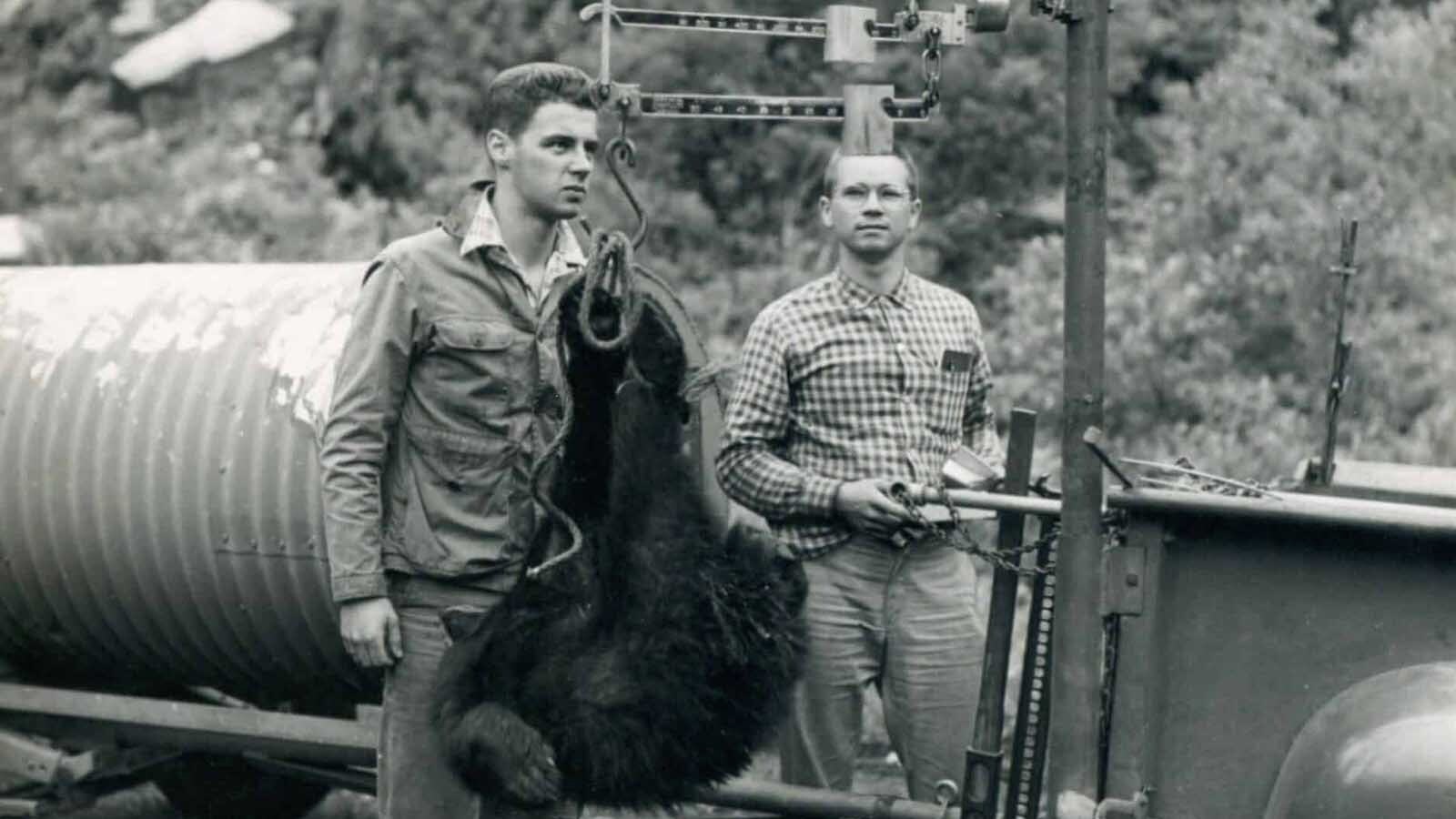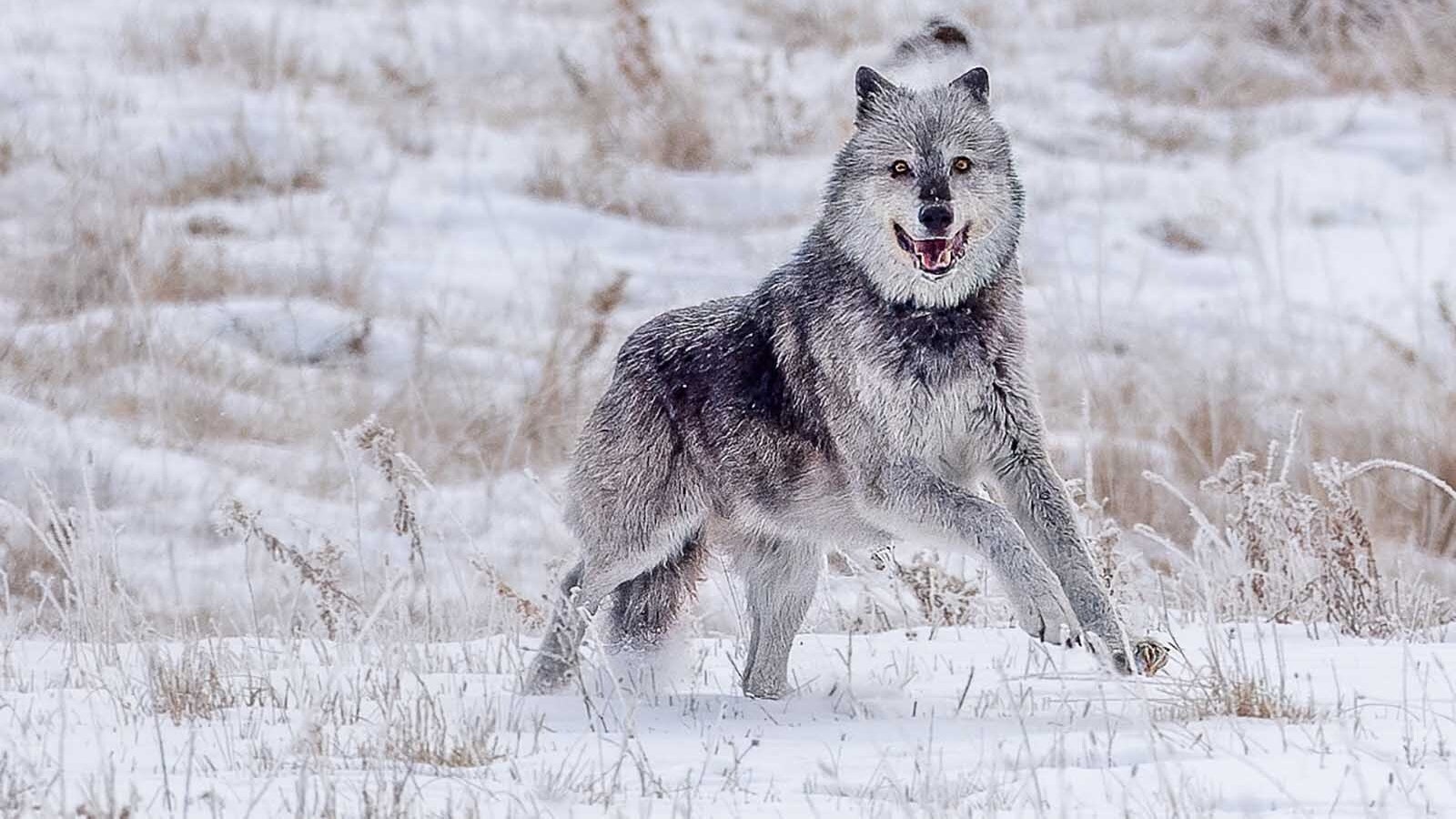About 10 years ago, Kevin Grange witnessed an incident in Yellowstone National Park that he thinks sums up the complicated, and sometimes tense, relationship between grizzlies and humans.
With Old Faithful geyser expected to erupt on schedule, a huge crowd had gathered around the site when a young sub-adult grizzly came galloping through, said Grange, who was working for the National Park Service at the time.
“The bear immediately climbed a tree – dispelling another myth people believe about grizzlies, that they can’t climb trees,” he told Cowboy State Daily. “Right away, the tree was surrounded by people.”
After shooing the crowd away, rangers tried hazing the bear out of the tree, but to no avail. So, they cleared a wide perimeter and waited. After nightfall, the young grizzly climbed down and walked back into the forest.
The sight of the stressed-out bear surrounded by a sea of gawkers brought a simple point home to Grange. “Bear problems” are, more often than not, actually problems caused by people, he said.
Grange grew up in New Hampshire and went to Los Angeles for paramedic training before moving to Jackson, Wyoming.
When he first came to Wyoming, grizzlies scared him.
“I’ve always been fascinated by the bears, but I was terrified of them,’ he said.
So, he set out to better understand them and wrote a book about his experiences. “Grizzly Confidential: An Astounding Journey Into the Secret Life of North America’s Most Fearsome Predator” comes out next month.
“I think as a writer my hope is to make the science of grizzly bears interesting and fun to read on the page,” he said.
Going Where The Action Is
When Grange decided to train as a paramedic, he chose Los Angeles, because he knew he would get plenty of experience there, and quickly.
He moved to Jackson because he wanted to be close to the outdoors and wildlife. After stints with the Park Service in Yellowstone, Grand Teton and Yosemite national parks, he landed a position with Jackson Hole Fire/EMS.
“Primarily, I love helping people and working as part of a team. I’m combining my two passions, the outdoors and medicine,” he said.
Working in wildland emergency services can be more challenging that the wild streets of L.A., he said.
“Every day is different. It’s always challenging and fun,” he said. “I find it harder out here than in Los Angeles. In the city, you’re surrounded by hospitals.”
Getting patients to a trauma center from remotes sites in Yellowstone and Grand Teton country is another matter entirely.
“One time, we had a bison on the helicopter pad, so we couldn’t land the helicopter until we could get the bison to move,” Grange said.
He started writing books about his experiences. His third book, “Wild Rescues: A Paramedic’s Extreme Adventures in Yosemite, Yellowstone and Grand Teton,” was published in 2021. It won the High Plains Award in the Medicine & Science category.

‘I thought I Was A Bear Person’
Grange grew up loving the outdoors, and while New Hampshire doesn’t have grizzlies, there are many black bears there.
“I was always fascinated by black bears and grizzlies, and I thought I was a bear person,” he said.
But living in grizzly county proved to be a different experience altogether.
“One raided my neighbor’s chicken coop. And then when Grizzly 399 and her four cubs did a walkabout right through Jackson in 2021, I started to question how I felt about grizzlies,” he said.
But rather than hiding away from the apex predators or moving somewhere else, he decided to confront his fears by learning as much about grizzlies as he could.
“I think maybe I started this journey thinking bears were the problem,” he said.
He spent time with bear exerts in Yellowstone, and went through the “Survive the Griz” — bear attack safety course offered by former Navy SEAL Chris Forrest of Bozeman, Montana.
He also traveled to Alaska and spent time among that state’s massive coastal brown bears.
Alaska’s bears are huge, up to 1,200 pounds or more, but the abundance of available food there makes them more mellow, Grange said.
“They’re kind of like this portly guy just sitting on the couch with his TV remote and his fridge,” Grange said.
Grizzlies in Wyoming must compete more with other bears for food and space, so they’re more “on edge” than Alaska’s coastal bears, he said.
Follow The Rules
Even so, Grange said he’s learned the grizzlies in the Greater Yellowstone Ecosystem aren’t trying to hunt people down.
“The bears, they’re not out to get us. They’re not these bloodthirsty things,” he said. “Out of the countless encounters that people have with grizzlies, only a tiny fraction of those encounters make the news.”
Those that make the news are usually stories of people being mauled, or even killed, by grizzlies, he said.
When things go badly between grizzlies and people, it’s usually because people made bad choices, Grange said.
“Somebody might think, ‘I’m going to go hiking by myself.’ Or, ‘I’m going out hiking by myself early in the morning, when grizzlies are most active,’” he said.
Bear county safety courses can help people understand how foolish those sorts of choices are, he said.
“What they teach really works. When people divert from that, it really amps up the risk,” Grange said.
He also learned that the bears play an important role in nature.
“They are ‘ecosystem engineers.’ They help spread seeds through their scat, and they till the earth by digging it up with their claws,” he said.
Cooperative Effort
In his travels and research for “Grizzly Confidential,” Grange tried to find as many perspectives as he could.
“Although I would never personally want to shoot a bear,” he said he tagged along on a guided bear hunt in Alaska.
Through that experience, he learned the important role that hunters and guides can take in bear conservation.
While bear conservation is a cooperative effort in Alaska, Grange thinks in Wyoming and the rest of the Lower 48 “opinions are polarized,” and various interest groups might not communicate as well as they should.
That needs to change, he said.
“To co-exist with bears, it needs to be a community effort. I can’t say, ‘I want grizzlies on the landscape,’ but not be willing to help the rancher who is losing cattle to grizzlies,” he said.
That might entail volunteering to help ranchers clean up cattle carcasses, which can be grizzly magnets, he said.
‘This Is The New Normal’
As grizzlies continue to expand their range, bear conservation and co-existing with grizzlies will increasingly fall on the people who live in those areas, he said.
Bears have been pushing out of the core wilderness habitat in Grand Teton and Yellowstone and are showing up in and around settled areas. That trend will continue, Grange said.
“This is the new normal,” he said.
So, it will take efforts from everybody to make sure that loose garbage and other temptations for bears stay cleaned up, lessening the chances for conflicts, he said.
Grange said he has an abiding respect for grizzlies and is cautious in their territory, but he’s no longer terrified of them.
“For me, the value is of grizzles is that they are the epitome of the wilderness. And if we have them, it shows that we value the wilderness,” he said. “Just knowing that there’s bears out there when you take a hike, it just awakens your senses. It’s a different hike in a really cool kind of way.”
Mark Heinz can be reached at mark@cowboystatedaily.com.








